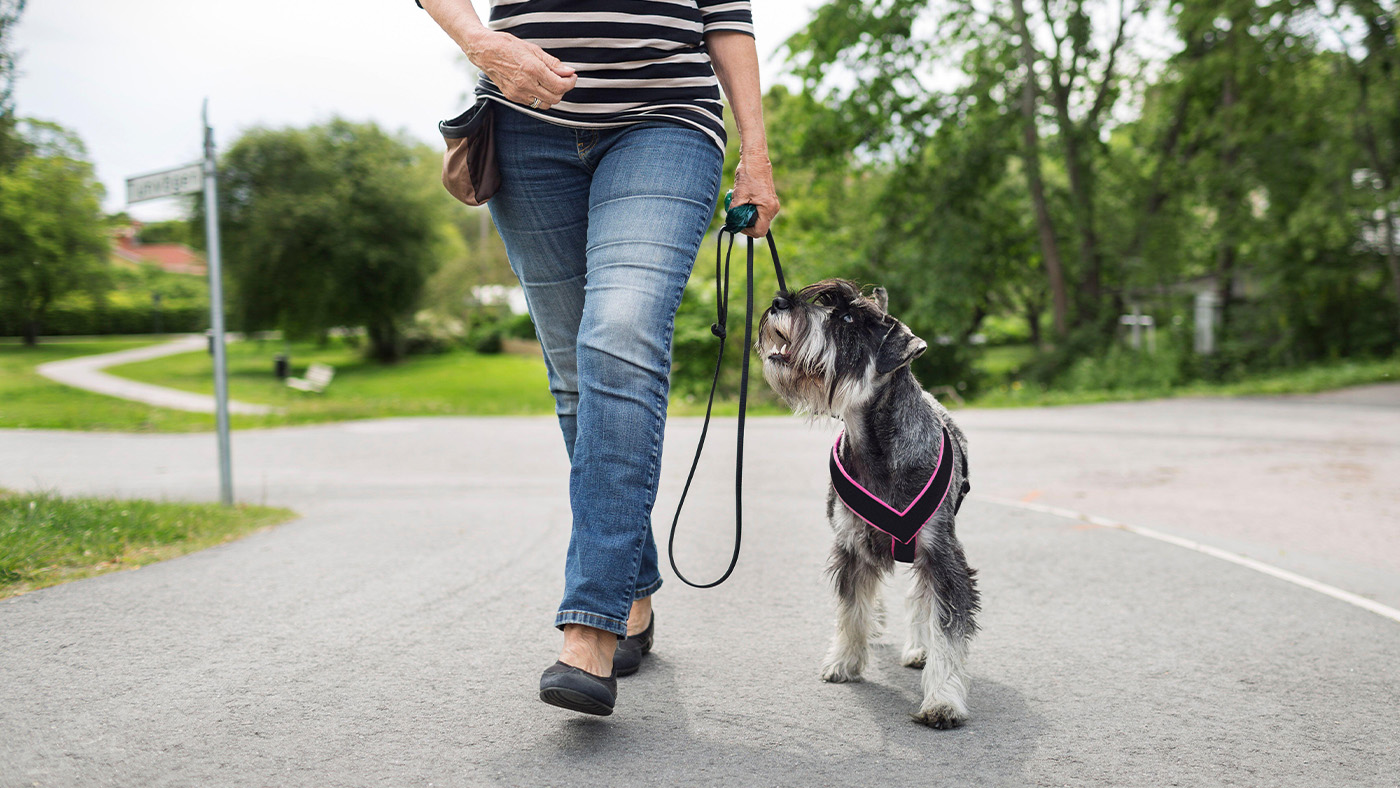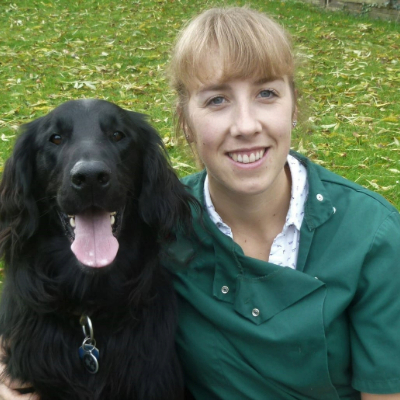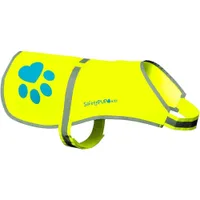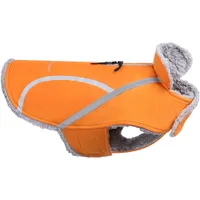How to keep dogs safe around roads
Minimize the risk with this important advice from experts

Road safety is something we might not want to think about when it comes to our dogs, but it’s vital to ensure that we keep them safe around roads to avoid accidents – dogs, of course, aren’t as aware of the dangers of cars and vehicles as we are, so it’s up to us to keep them safe.
Always walking you dog with one of the best dog leashes and keeping a watchful eye on your dog will go a long way, but there are plenty of road dangers to be aware of.
Internal data from Animal Friends Pet Insurance shows that the autumn and fall months are the most dangerous for animal road accidents in the UK, and the Insurance Institute for Highway Safety (IIHS) found the same in the US, too.
That’s why we’ve got some advice from Catrin George, animal wellbeing specialist at Animal Friends, and vet Dr Rebecca MacMillan too, helping you keep your pup safe.
George says, “There are several steps you can take to improve your dog’s road safety training if you are walking around roads and pathways. We all want our pets to be safe and it is best to be very careful near roads, whether they are quiet country lanes or busy roadways.”
What we can do to keep our dogs safe around roads
1. Increase visibility
This is particularly important in the darker months of the year – make sure you and your pup can both be seen by drivers. Ensure that your pup is on a leash whenever they’re near a road, and depending on your jurisdiction the law might require it too, but reflective clothing can also help both of you.
Make sure your dog is seen from a distance with this lightweight reflective vest. Available in five sizes.
This fleece-lined windproof and water-resistant coat will keep your dog seen as well as warm and dry. Available in seven sizes.
2. Watch out for escape routes
If your dog spends time in the backyard, make sure that any gates are closed, there aren’t any gaps in hedges, and no fences have blown down – here’s how to puppy-proof your house and yard for more advice!
Get the best advice, tips and top tech for your beloved Pets
“Keeping your dog secure on your property is the best thing you can do to keep your pet safe,” says Dr MacMillan. “Even if you live down a quiet country lane, you should not allow your dog to roam freely. An unsuspecting car coming too fast around a bend could result in a nasty accident.”
3. Teach your dog to sit
Of course, this is an important skill for your dog to learn regardless, but it can really come in useful when helping to keep them safe. Teach your pup to sit when they approach a curbside, and not to cross the road without a specific command. If you have a younger dog, here’s how to teach a puppy to sit.
“This way they will learn that they should never cross a road without your permission,” adds George. “However, you cannot fully rely on this and you should always be cautious near roads, whether they are quiet country lanes or busy highways.”
4. Look out for tunnel vision
Sometimes, dogs can develop tunnel vision when chasing a ball, a toy, or something else that’s grabbed their attention. As a result, they can become less aware of their surroundings. So if your dog has a high prey drive in particular, it’s important to make sure they’re on their leash when near any roads – even if it’s quiet, or you’re walking them in a park or field that’s bordered by a road.
5. Keep flexible leashes retracted and locked
Retractable leashes can lead to dangerous situations – if your dog suddenly runs and the leash quickly extends, you could lose control. Of course, it’s better than having no leash at all, but it’s vital not to get caught off-guard. Here’s our guide to the best dog leashes if you’re thinking of upgrading.
And, explains Dr MacMillan, in some countries if you are viewed as not being in control of your dog, you could be liable and have to pay damages to the owner of the vehicle if a road traffic accident occurs.
6. Ensure the collar or harness fits properly
If your dog can wriggle free from or reverse out of their harness, there’s a higher risk that they’ll be part of an accident.
“I am always seeing pets in the clinic wearing ill-fitting items, with the pets being able to reverse out of them when scared or pulling against their owner,” says Dr MacMillan.
Here are some tips on how tight a dog harness should be – and our guide to the best dog harnesses, too.
7. Be prepared for overexcitement
As any dog parent can attest to, any dog can momentarily get overexcited and lose control. This might not be too dangerous at home or in the backyard, for example, but could be if you’re near a road.
George advises, “Try to behave calmly, and discourage over-exuberant behavior near roads and cars from the day you first bring your dog or puppy home. Make sure you’re keeping toys and balls out of sight near roads so they know it is not play time, and keep treats on hand to encourage and reward good, calm behavior. This will teach them to approach these things with caution.
8. Take care when leaving the car
If you’re driving somewhere for your walk, ensure that their leash is securely fastened before getting them out of the car, and make sure the road is clear, too. This way, if they jump out before you’re ready, you’ll be in control and ready to minimize potential danger. Here’s how to secure a dog in a car for more information, along with our guide to the best dog car harnesses.
“It takes a lot of constant practice,” summarizes George, “And you will need to be patient and provide regular praise for good behavior. In the long run, investing time into your dog’s road safety training can be life-saving!”
If there are poor weather conditions and you aren’t able to take your dog for their walk, meanwhile, here are eight hidden dangers to dogs around the home that all owners should know about to keep your pup safe indoors.
You may also be interested in... how to travel with a dog, how to road trip with your dog and tips for travelling with pets.

Rebecca is a vet surgeon who graduated in 2009 from the Royal Veterinary College in London. She has a wealth of experience in first opinion small animal practice, having done a mixture of day-to-day routine work, on-call emergency duties and managerial roles over the years. She enjoys medicine in particular and she is proud to have recently achieved a BSAVA postgraduate certificate in small animal medicine (with commendation). She writes on various feline and canine topics, including behavior, nutrition, and health. Outside of work and writing she enjoys walking her own dog, spending time with her young family and baking!

Adam is a freelance journalist specialising in pets, music and culture, and mental health and wellbeing. He investigates and writes the large majority of news on PetsRadar, and collaborates with veterinary experts to produce informative pet care content.
Adam has a journalism degree from Southampton Solent University and a masters degree in Magazine Journalism from Cardiff University. He was previously senior editor at dog advice website DogTime.com, and has also written for The Independent, GoodToKnow and Healthline.
He owns two rescue cats, Bunny and Dougie, and has also previously had a rabbit, fish and Roborovski dwarf hamsters.


